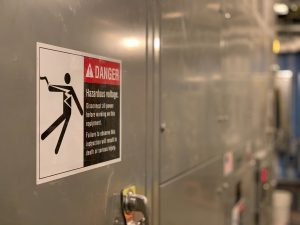While the brunt of the responsibility of maintaining a safe workplace falls on your employer, it is up to you to refuse work when there is a hazard that poses an imminent danger.
All employees deserve a safe workplace. Through OSHA’s Workers’ Rights and Protections, you have a right to refuse work that is dangerous and poses an imminent danger to you and your cohorts.
Regardless of the industry you’re in, your employer must meet a set of requirements to keep their workers healthy and safe, but there can be new circumstances that arise that may be unsafe.
If that moment arises, do you know what to do?
It’s essential to understand your rights when in an unsafe work environment so you can take the necessary steps to report the conditions and protect your safety and security.
In this article, we’re sharing the details regarding OSHA’s Workers’ Rights and Protections and your personal right to refuse dangerous work so that if you’re ever put in the position, you’ll know how to handle it.
What is OSHA?
OSHA stands for the Occupational Safety and Health Act and is a federal statute that states employers must create and maintain a workplace free of all dangerous conditions for both health and safety. If anything in the workplace could cause imminent illness, injury, or death, they must eliminate the risk to keep their workers top priority.
In addition to setting these standards, OSHA also enforces the act and performs routine inspections to ensure that all safety and health standards are met or exceeded. The OSHA Act covers most private sector employers and their employees and some public sector employers/workers.
OSHA’s goal is to protect workers from things such as injuries, hazards that could cause severe injury or death, and illnesses brought on by unsafe working conditions.
The first responsibility of OSHA falls on employers. They must abide by a specific set of workplace safety standards, including:
- A workplace that is free from safety and health hazards that could lead to serious injury or death
- An OSHA job safety bulletin somewhere visible in the workplace
- Detailed records of all injuries, exposure to hazardous material, and deaths caused by work conditions
- Safety training when necessary, depending on the job at hand
OSHA includes more detailed safety standards for hazardous chemical management, protective clothing, fire protection, and equipment maintenance.
When Work Poses Imminent Danger
There are two types of hazards most commonly seen in the work: those that pose an imminent danger and those that do not. While hazards that don’t pose an imminent threat are still important to report, they are not as high on the priority list as those that pose an imminent danger.

When the workplace conditions put your safety and health in imminent danger, it’s important to report the hazard to OSHA. In addition to reporting, you can also refuse to work in this space if the circumstances meet the following requirements:
- There is both good faith and reasonable belief that a particular workplace condition poses a substantial and immediate risk of either illness, injury, or death.
- The employer refuses to solve the problem and eliminate dangerous conditions.
- The danger is so imminent that there is not enough time to report the hazard to OSHA or the appropriate reporting agency.
- You do not have a reasonable alternative to keep yourself safe at work.
Under these standards, you can refuse work and only return when the employer effectively solves the problem, eliminates the hazard, and can assure that the danger is gone.
When Work Does Not Pose Imminent Danger
When a hazard does not pose an imminent danger, but there is still a risk of injury, sickness, or death, it’s smart still to report the issue to your employer in writing. Once you’ve submitted your written citation, allow your employer to correct the issue. If they fail to solve the problem, you can then file a formal complaint through OSHA or the appropriate state agency.
Many workers fear that they will be retaliated against for reporting a safety violation in the workplace. However, under OSHA, the employer is prohibited from doing this. They are not allowed to demote, reduce pay for, or fire any employees due to a complaint. If OSHA determines that your employer did retaliate against you, you may be entitled to reinstatement to your position or lost compensation.
Steps to Follow if You Encounter an Unsafe Workplace
Have you encountered unsafe working conditions that pose an imminent danger? After first evaluating the unsafe working conditions at your job site, these are the following steps you should take:
- Ask your employer to assign you to other work and correct the hazard that is there.
- Firmly but respectfully tell them you refuse to perform work until the conditions are better and the hazard has been fully corrected.
- Remain at the worksite until your employer orders you to do so.
Support a Safe Workplace by Refusing Dangerous Work
While the brunt of the responsibility of maintaining a safe workplace falls on your employer, it is up to you to refuse work when there is a hazard that poses an imminent danger. Use the tips listed above to determine whether a hazard poses an immediate and imminent danger, and then use the steps listed to appropriately handle the situation and keep everyone safe.


Join the conversation!